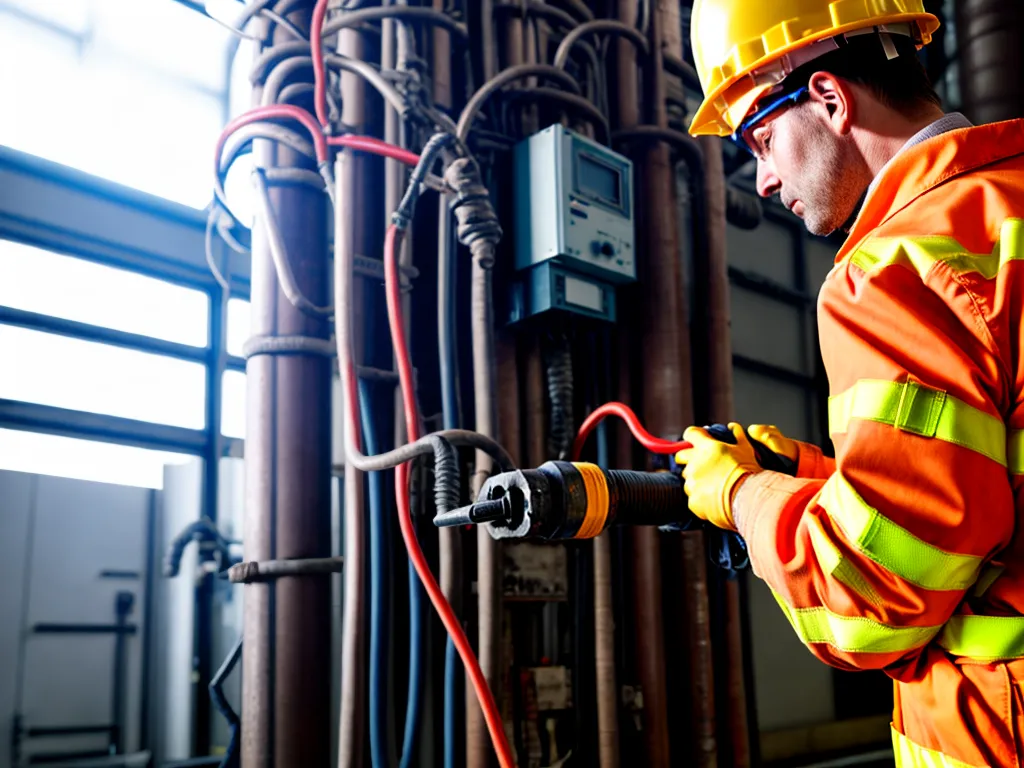
Industrial Electrical Safety: Hazards and How to Avoid Them
As an electrician, I am acutely aware of the hazards present in industrial electrical work. Electricity can seriously injure or even kill if proper safety precautions are not followed. However, with knowledge, training, and vigilance, these risks can be dramatically reduced. In this article, I will provide an in-depth look at major industrial electrical hazards and effective ways to avoid them.
Common Industrial Electrical Hazards
Industrial electrical systems have unique hazards not typically found in residential or commercial settings. Here are some of the most common hazards I routinely encounter:
Arc Flash
Arc flash is an extremely dangerous hazard caused by a high-energy electrical arc. It can occur from a short circuit, disconnected wires, or faulty equipment. Arc flash can instantly vaporize materials and cause severe burns. The intense heat and blast pressure can seriously injure or even cause death.
To avoid arc flash, I ensure appropriate personal protective equipment (PPE) is worn, and I follow safe electrical work practices. Regular inspection and maintenance of equipment also helps reduce risk. We perform arc flash hazard studies to determine proper PPE and safe approach distances.
Electric Shock
Contact with exposed energized conductors can result in an electric shock. It can cause severe burns or trauma from falls or muscle reactions. Shock can lead to cardiac arrest and death.
I avoid shock hazards by fully de-energizing and lockout/tagout procedures. I inspect PPE for integrity and verify equipment is properly grounded. I never work on live electrical equipment and use properly rated tools.
Electrocution
Electrocution occurs when electric shock results in death. It is most often caused by contact with high voltage lines or defective electrical equipment. Damaged extension cords also frequently cause electrocution.
To prevent electrocution, I maintain safe distances from all power lines and equipment. I ensure tools and extension cords are in good condition. I verify electrical equipment is properly grounded and bonded. I never disable or override safety features.
Arc Blast
Arc blasts result from extremely high-energy electrical faults. The explosive release of energy causes a pressure wave that can seriously injure workers. It can destroy equipment, ignite fires, and scatter molten metal.
Appropriate PPE, establishing safe approach distances, and installation of arc blast containment measures provides protection. Regular inspections and maintenance reduces the chances of faults developing. I ensure work on high-energy systems is done with strict adherence to safety protocols.
Fire
Faulty electrical equipment is a major cause of industrial fires. Short circuits, overheating, and arcing can ignite combustible materials. Fires can result in severe burns and smoke inhalation. They can also damage equipment and result in extensive facility damage.
I help prevent electrical fires by ensuring circuits are not overloaded. Regular inspections identify faulty or damaged equipment requiring repair or replacement. Good housekeeping prevents combustible materials from accumulating. Fire detection and suppression systems are critical safeguards as well.
Effective Precautions and Safe Work Practices
While risks cannot be entirely eliminated, the following precautions and safe work practices dramatically improve electrical safety:
Personal Protective Equipment
Properly rated PPE suitable for the specific hazard must be worn. This includes arc flash suits, rubber insulating gloves, hard hats, and safety glasses. I ensure PPE is well-maintained and inspected regularly.
Lockout/Tagout Procedures
Lockout/tagout procedures isolate equipment from energy sources during service and maintenance. I strictly follow established lockout protocols and verify zero energy state before work begins.
Establish Approach Boundaries
Approach boundaries define safe distances to maintain from exposed live conductors and equipment. Distances are based on voltage. I observe all established approach boundaries.
Regular Inspections and Maintenance
I conduct regular inspections and maintenance on all electrical systems and equipment. This identifies issues to correct before they become major problems. I follow a rigorous preventive maintenance schedule.
Grounding and Bonding
Proper grounding and bonding provides critical safeguards. I verify all systems and equipment are well grounded. Bonds between metal parts ensure faults follow the path of least resistance.
Good Housekeeping
Good housekeeping prevents hazards. I make sure work areas are clean and free of debris. Materials are stored properly to reduce tripping and fire hazards. I eliminate any exposure to flammable liquids and vapors.
Adherence to Safe Work Practices
Strict adherence to established safety protocols prevents injuries and fatalities. I complete all required training and earn necessary certifications. No "short cuts" are ever taken and energized work is avoided whenever possible. Safety is always the first priority.
Conclusion
Industrial electrical work presents very real hazards that cannot be ignored. However, through rigorous training, adherence to safe work practices, wearing proper PPE, and diligent equipment maintenance, the risks can be substantially reduced. Regular hazard assessments and audits are also critical. Staying constantly vigilant and avoiding complacency encourages a culture of safety excellence. Through knowledge, teamwork, and care for one another, the hazards of industrial electrical work can be managed safely.